Outdoor living room ideas - turn even the smallest corner into a space to relax
Outdoor living room ideas are here to help you make the most of long, lazy summer afternoons, as experts explain how to style them
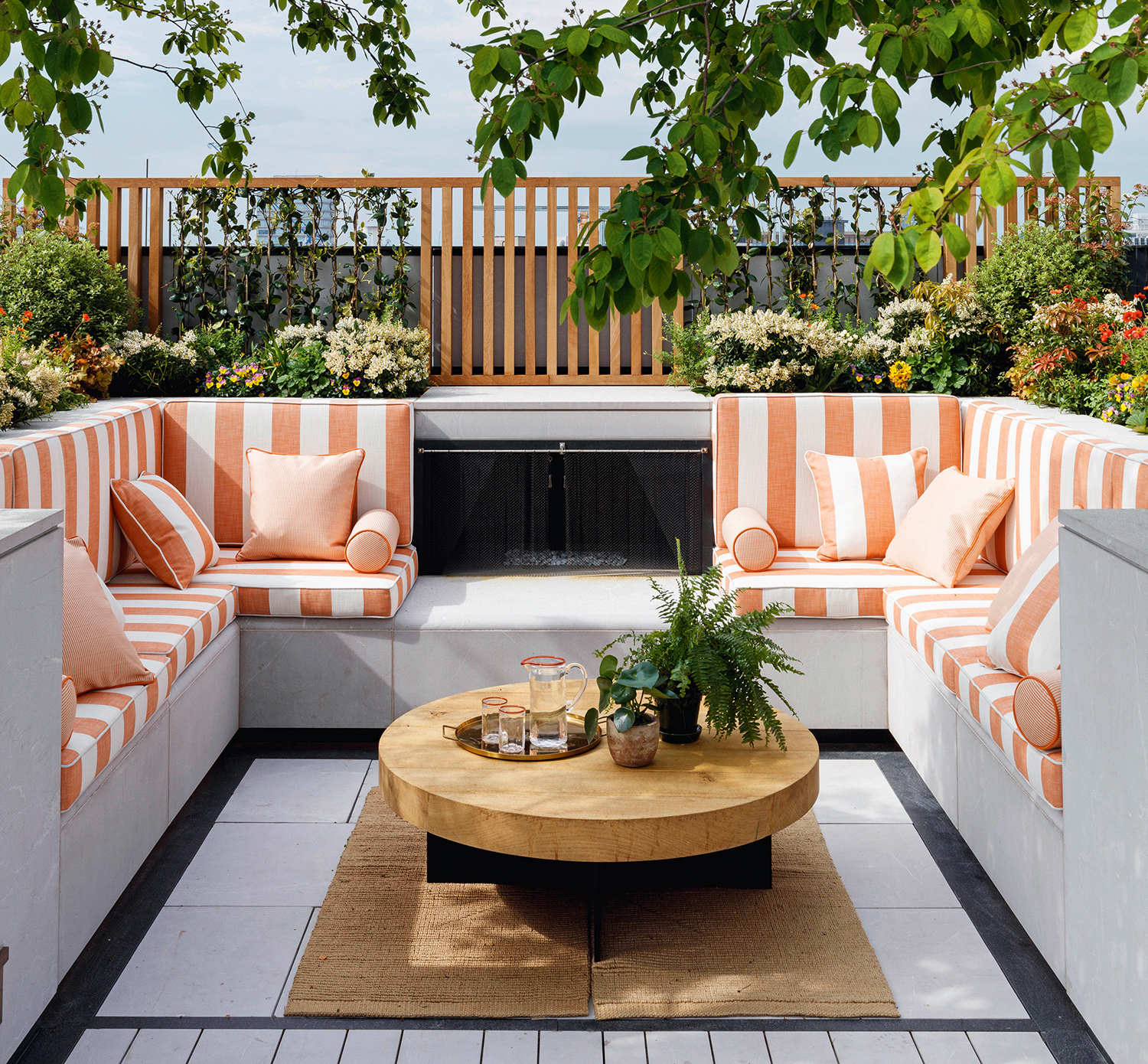
An outdoor living room is the ultimate in alfresco luxury. A place to put your feet up in, a space to relax in, all while feeling the breeze on your face and the sun on your skin.
For a space that really works, take time to figure out what you require from an outdoor seating area. And when it comes to outdoor furniture think about what materials are best to use too. We’ve enlisted the help of industry experts to help you do exactly that and pose all of the important questions. ‘As with any interior room, it’s important to consider form and function,’ advises Rebecca Hunt, Director of Suna Interior Design Studio. ‘How big is the area you are looking at? How and when might you be using it? Will it act as an entertainment space? Or will you only perch there occasionally to watch the world go by?’
So beyond simply getting a sofa and a gas grill and calling it a living room, take a moment to consider what you're after. Once you've decided what you want your outdoor living room to be for, here's how to put it into practice.
Outdoor living room ideas
1. Approach the space how you would with an indoor room
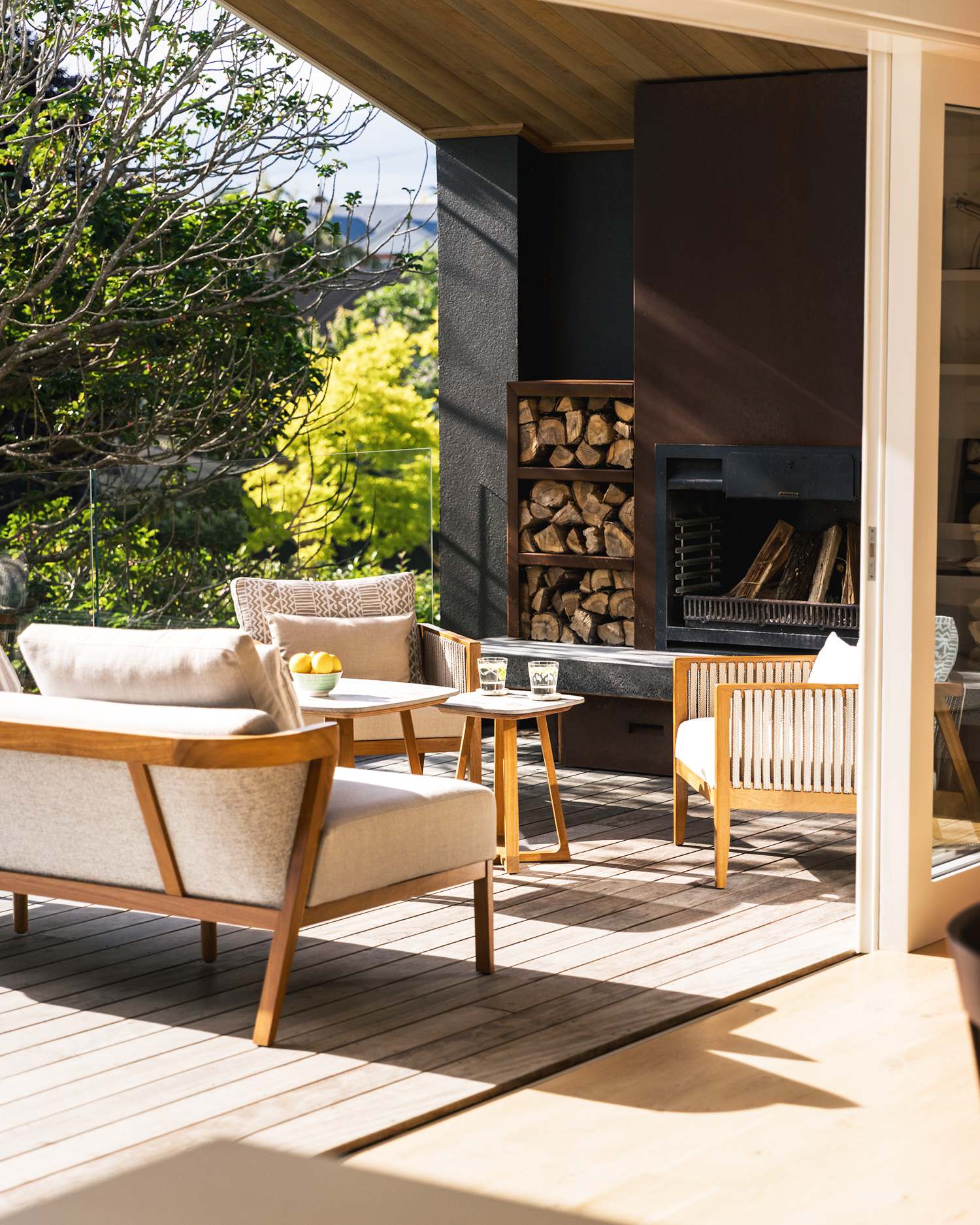
When creating a seating area outside, follow the same principles of design that you would for any other lounging space in your home. ‘The key to creating a comfortable outdoor seating space is to design the space in the same way you would a living room,’ says Rebecca Lorimer, owner of luxury outdoor furniture brand Coco Wolf. ‘Think about the purpose you’d like the space to fulfil, and how you want to feel in it. Is there a focal point or a view you want to accentuate? And where does the light fall?’
For an indoor room, light levels may impact your color choice or room layout, but in a yard it’s especially crucial to observe. ‘For a south facing yard, shade-creating awnings and parasols will be important,’ says Rebecca.
And just like in a living room, in addition to seating, it’s a wise idea to include other types of garden furniture to maximise usability and comfort. ‘Accessories such as nesting tables and footstools help to punctuate the space, creating flow and balance,’ explains Rebecca. ‘They also provide a functional perch for food, drinks and books.’
2. Choose hard-wearing materials

With natural elements at play, it’s imperative to understand what materials and finishes will work best - especially if you’re planning to leave your seating set up all year round.
This concrete seating was created by Studio Ashby, and couldn't be more hardwearing. For furniture that isn't built in, aluminum is a good idea.
‘We use it across all of our designs because it has so many great qualities that make it suitable for all-year outdoor conditions,’ says outdoor furniture designer Jennifer Newman, known for setting garden trends with her colorful pieces. ‘It’s resistant to rust, completely maintenance free and will hold its strength over many years.’
Jennifer uses lightweight aluminium, making her designs particularly flexible - perfect if your space needs to be multi-functional. ‘Seating that is easy to move allows your set up to adapt to the number of guests you have,’ she says. ‘Each of our pieces can be very easily moved around the garden to follow the sun and create impromptu dining spaces when needed.’
3. Use specific fabrics
An outdoor living room needs upholstery - it's this that sets it apart from just garden furniture in a yard. In terms of fabrics, Rebecca of Coco Wolf echoes the sentiment that longevity is key. ‘It’s well worth investing in the best fabrics,’ she says. ‘For our collection, we use high performance fabrics that incorporate the latest textile technology. Our rope finishing, for example, is of marine standard meaning it can withstand some challenging elements including UV rays, incremental weather, abrasion, chlorine and saltwater.’
And for wood, Rebecca recommends Iroko. ‘It’s a hardwood chosen for its strength and extreme durability. It expands and contracts depending on the environment, which reduces the possibility of cracking or splintering.’
4. Choose furniture sensitively

Gasholders London Penthouse. Design by Suna Interior Design Studio
‘Your choice of outdoor seating is going to be dependent on the space available and the position of the space you are designing,’ says Rebecca Hunt, Director of Suna Interior Design Studio. ‘For example, lightweight furniture is not going to be suitable for a windswept terrace garden, and large slouchy sofas are going to need quite a lot of space around them.’
Once you’ve realistically evaluated your space, you can begin to choose the type of seating you want. If you’ve decided you will primarily use it to entertain and you have the space, then a sizeable table with lots of chairs might be for you. Or, if you dream of spending your weekends outside reading, then a comfier sofa set up would be better.
There are always ways to work around the limitations of a space too, and being clever with the type of seating you go for can help to maximise its potential. ‘If space is at a premium, but you yearn to entertain, then you might choose stools that may not be the most comfortable, but will tuck away easily.’ says Rebecca. ‘If you want to be able to have a bit of both then allow for a couple of comfortable chairs for everyday use, but then mix in some stackable stools for when you have guests.’
5. Trick the outdoor living room into seeming bigger
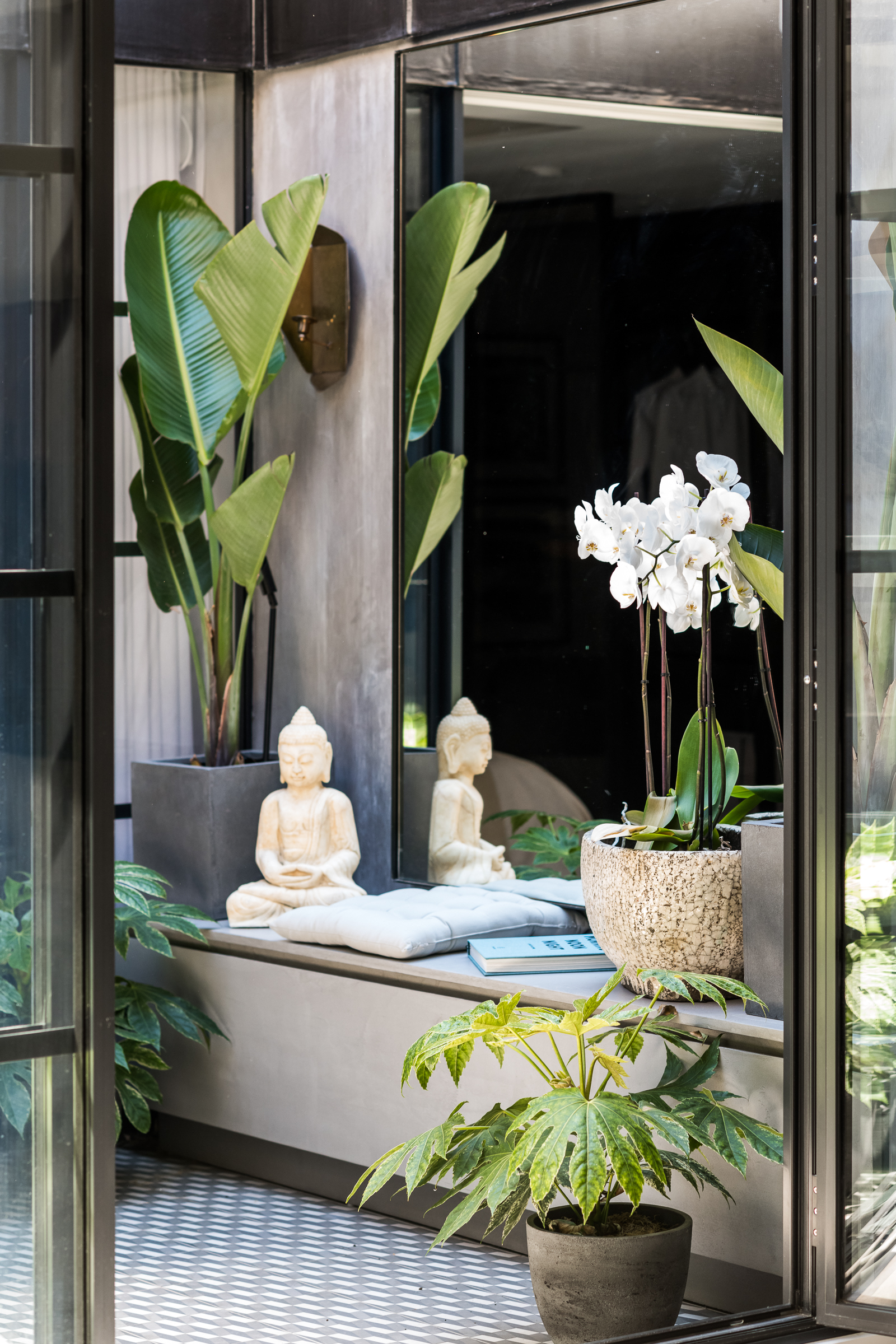
In addition to built-in seating, there are a few other tricks of the trade to try if you want to make the most of a small outdoor space. ‘This was a very small internal courtyard, and we wanted to open it up as much as possible and make it feel like another living space,’ says Hayley Robson, Creative Director and Co-Founder of Day True. ‘The apartment was refurbished during the first lockdown period, a time when access to any outdoor space became critical and desirable.’
Proving that just about any outdoor space can be turned into a relaxing sanctuary to enjoy nature and unwind, Hayley and her team at Day True employed some ingenious design tactics to turn this otherwise awkward space into a usable seating area. ‘It was too small to add a table and chairs, so we decided to build in a low bench seat,’ says Hayley. ‘Placing a tall vertical mirror on the back wall helped to create an illusion of space, and bounced natural light back into the interior rooms too. Tiles with a small pattern also helped to give the effect of the floor space being bigger than it was.’
6. Include a fire pit
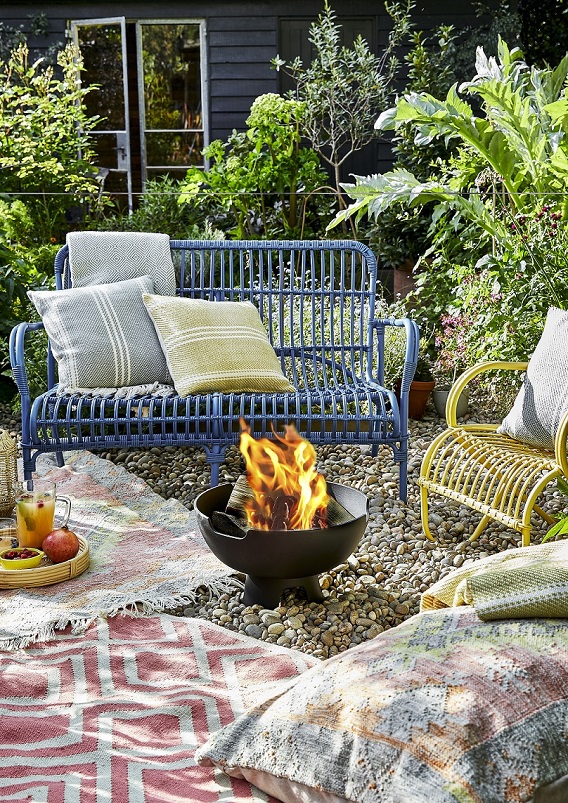
A way to ensure you’re seated comfortably outdoors is to opt for a freestanding fire pit. Guaranteed to warm you up on even the chilliest of evenings, it’s a fabulous addition to any outdoor set up. ‘Fire pits have become more popular over the years as they have gotten more affordable,’ says Declan Kingsley-Walsh, MD of Morsø UK.
‘Smaller in size, freestanding fire pits also take up less space, and as a result, are ideal for enhancing compact outdoor seating areas and gardens. The dancing flames will help to create the ultimate cosy ambience when relaxing with family or spending time with friends.’
7. Go bold with pattern and color
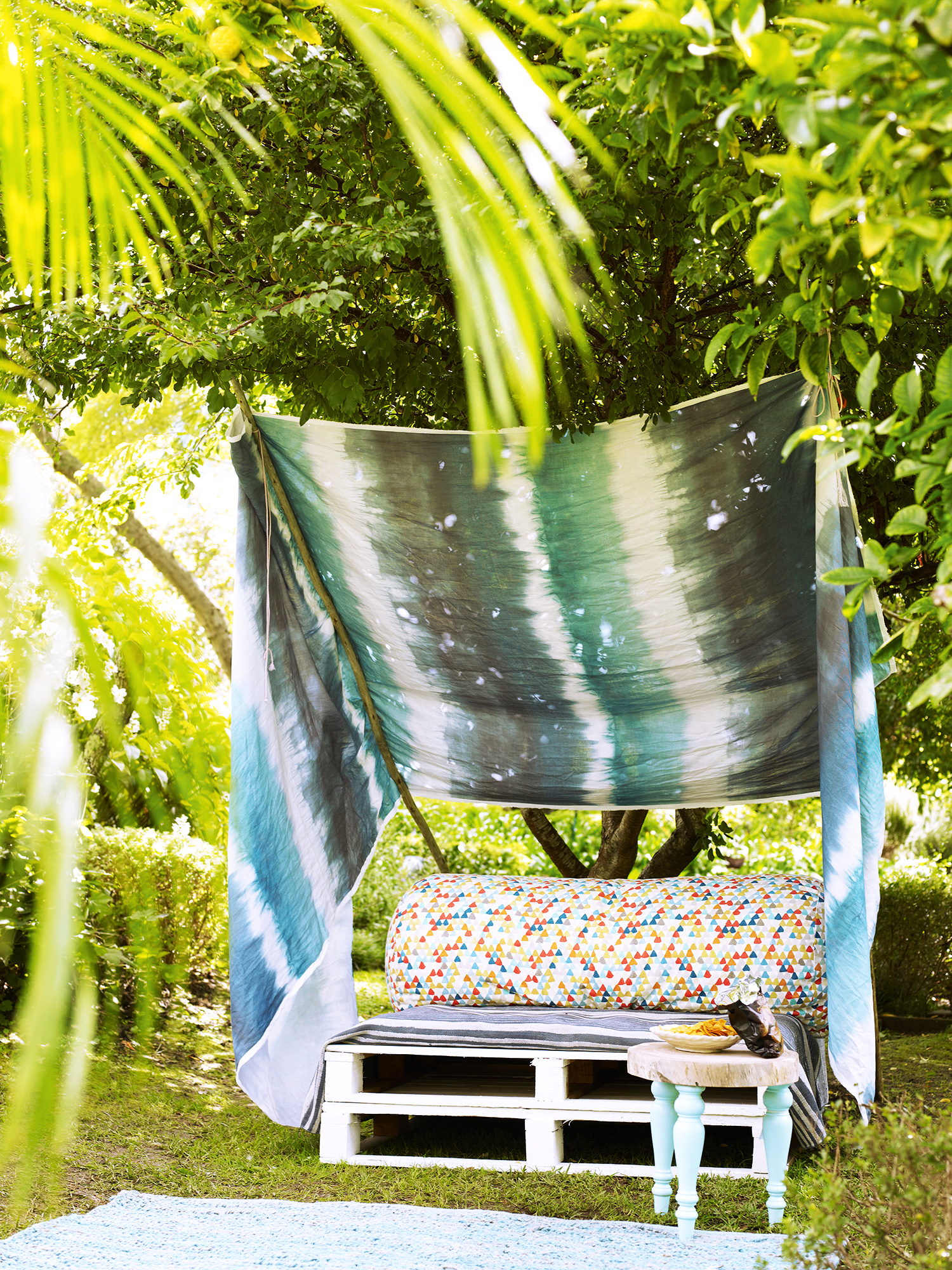
More than anything, your outdoor living room should bring you joy - and opting for furniture in patterns and colors you’re drawn to will always result in a space that you ultimately love. Stripes are a timeless choice, and make a bold statement. ‘Stripes and other patterns bring a punchy design element to outdoor seating,’ says Shalini Misra, Interior Designer and founder of The Design Buzz. ‘Stripes especially can bring a striking design feature to your space, contrasting brilliantly with the verdant greenery of surrounding plants.
Jennifer Newman also champions using color outdoors, ‘If you’re nervous about trying out brighter hues inside, the garden is a great space to experiment with bold colour and gives you the opportunity to be a bit more adventurous,’ she says. ‘For me bold, bright colours are an immediate mood-booster and will bring a sense of optimism and fun to a garden space that will encourage you to get outside and enjoy.
8. Plant to conceal your space
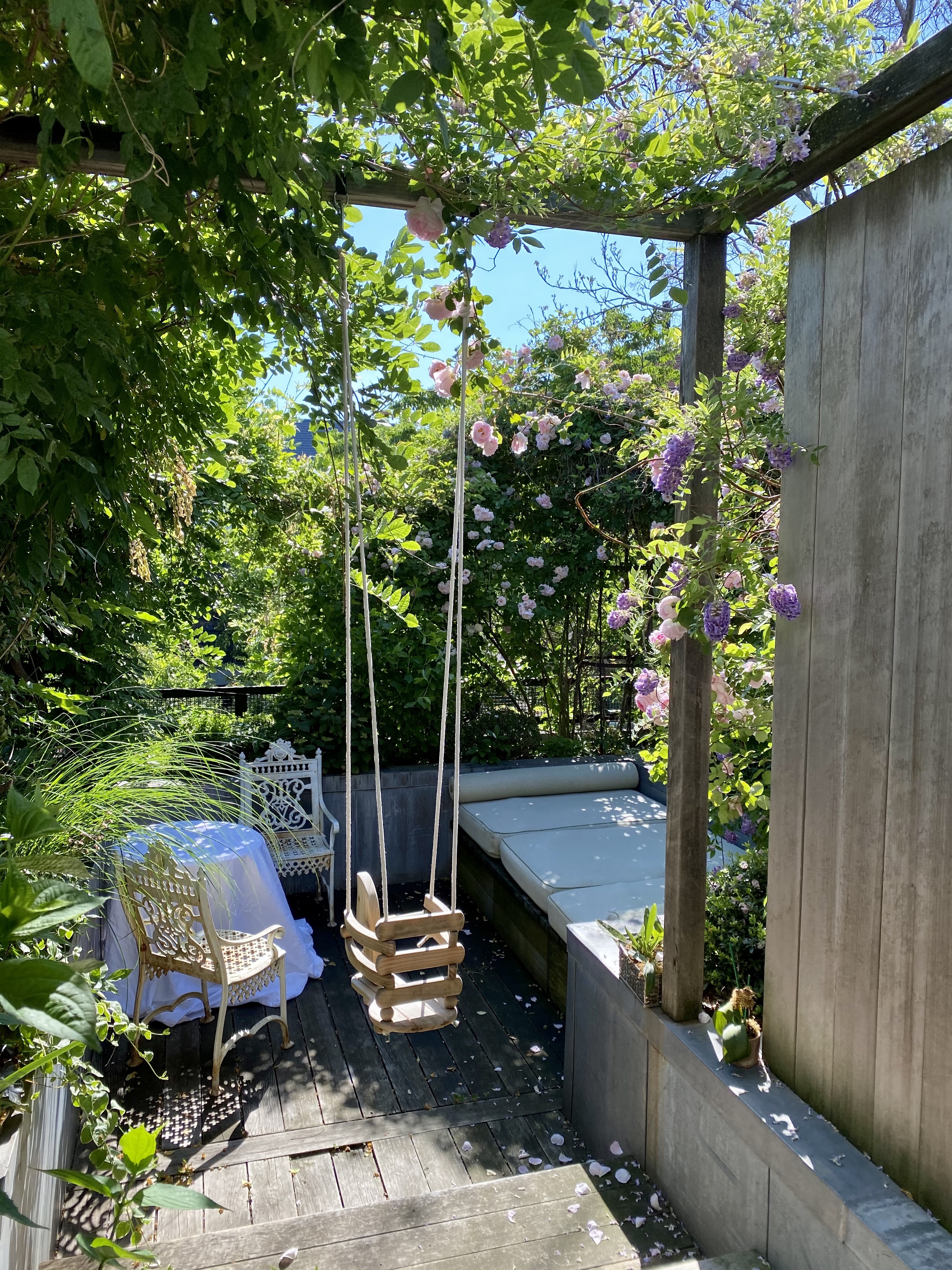
The New York-based landscape designer Grace Fuller wanted to use plants to enclose this outdoor living room. Creating a feeling of privacy and seclusion, this helps to make it feel more like a room, not a yard.
And if you're planting abundantlu like this, you need to think about what specific flowers to include. 'The most important choice when considering plants to me is to research the area's native plants, avoid invasive species, and from that list start my color palette,' Grace says. 'A mix of different leaf shapes and textures makes a space feel abundant and thoughtfully considered. Here I used a mix of Ilex glabra, Clematis virginiana, Polystichum acrostichoides, Adiantum pedatum L., David Austin rose Clair Matin, Hydrangea arborescens, and Panicum virgatum to name a few.'
9. Create a moveable living room
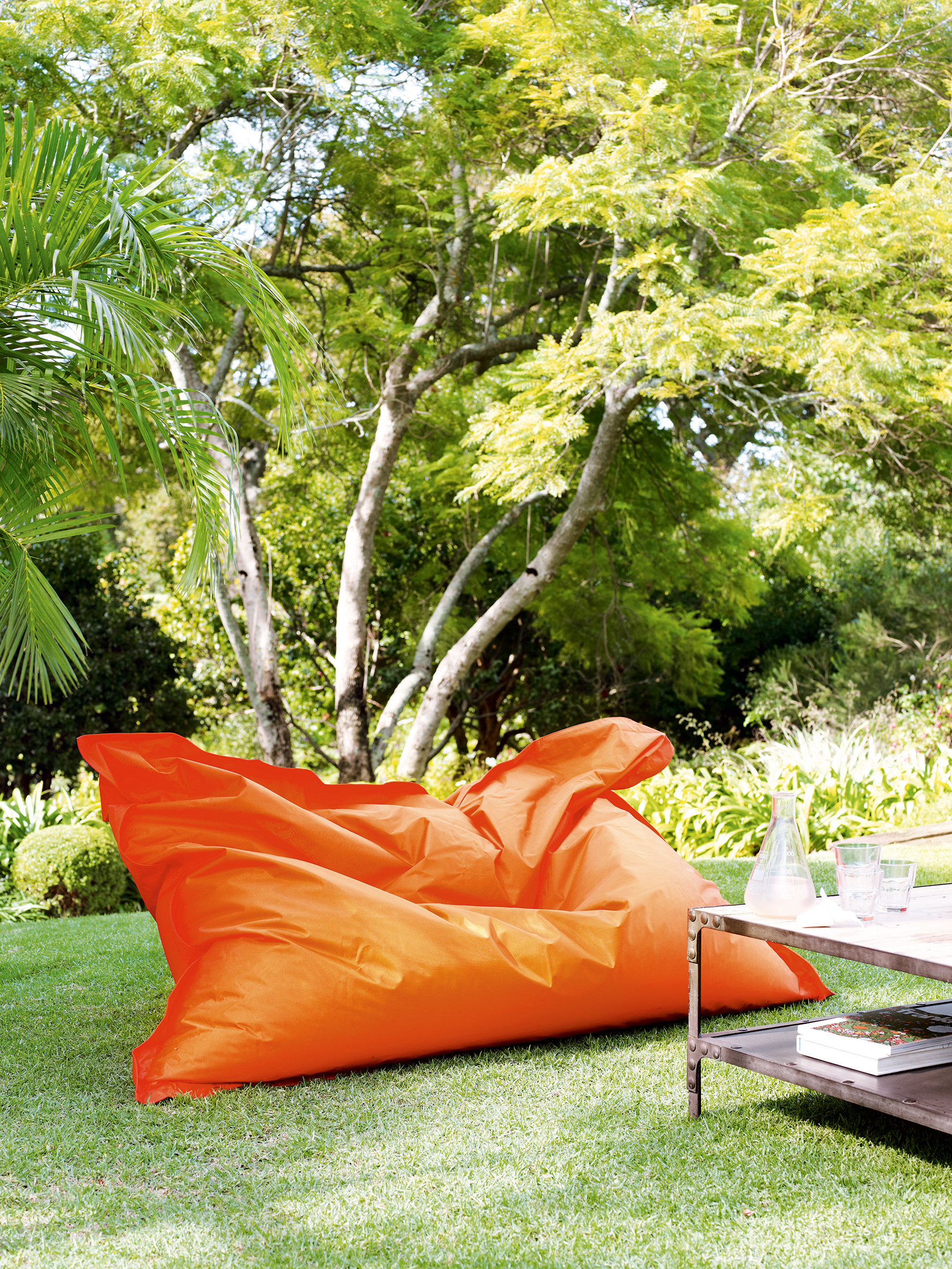
Does an outdoor living room need to exist all year round? Probably not - unless you live in tropical climes. And so, a big bean bag, like this one from Fatboy, could answer all your problems. Just place it under whichever tree you feel like lazing by that day, and you have yourself an instant space to relax.
What furniture do need in an outdoor living room?
An outdoor living room can have as much or as little furniture as you want it to have, though space for at least two people to sit at any one time is encouraged.
'An outdoor living room is a state of mind, rather than a physical space,' says Livingetc'ds editor Pip Rich. 'It's about creating an area you want to relax in, and can include any furniture you choose. However, I'd suggest at least one sofa and/or a couple of chairs, a low or coffee table, and perhaps an outdoor rug to tie everything together.'
Be The First To Know
The Livingetc newsletters are your inside source for what’s shaping interiors now - and what’s next. Discover trend forecasts, smart style ideas, and curated shopping inspiration that brings design to life. Subscribe today and stay ahead of the curve.
Interiors stylist and journalist Amy Neason was the Deputy Style and Interiors editor at House Beautiful for years. She is now a freelance props and set stylist, creating work for a range of national publications and brands such as Imogen Heath. She has previously worked at Established & Sons, and her skills include styling still life and interiors shots for editorial features and sourcing unique products to create inspirational imagery. She is particularly respected for interpreting seasonal trends into feature ideas and style stories.
-
 Burl Wood Decor Is 2025’s Most Coveted Comeback — Here’s How to Get the Storied Swirls for Less
Burl Wood Decor Is 2025’s Most Coveted Comeback — Here’s How to Get the Storied Swirls for LessIrregularity is the ultimate luxury, but you don’t need an antiques dealer to find it
By Julia Demer Published
-
 5 Garden Features That Instantly Add Value to Your Home — While Making Your Outdoor Space More Practical, too
5 Garden Features That Instantly Add Value to Your Home — While Making Your Outdoor Space More Practical, tooGet to know all the expert tips and tricks for making your backyard a standout selling point for your home.
By Maya Glantz Published